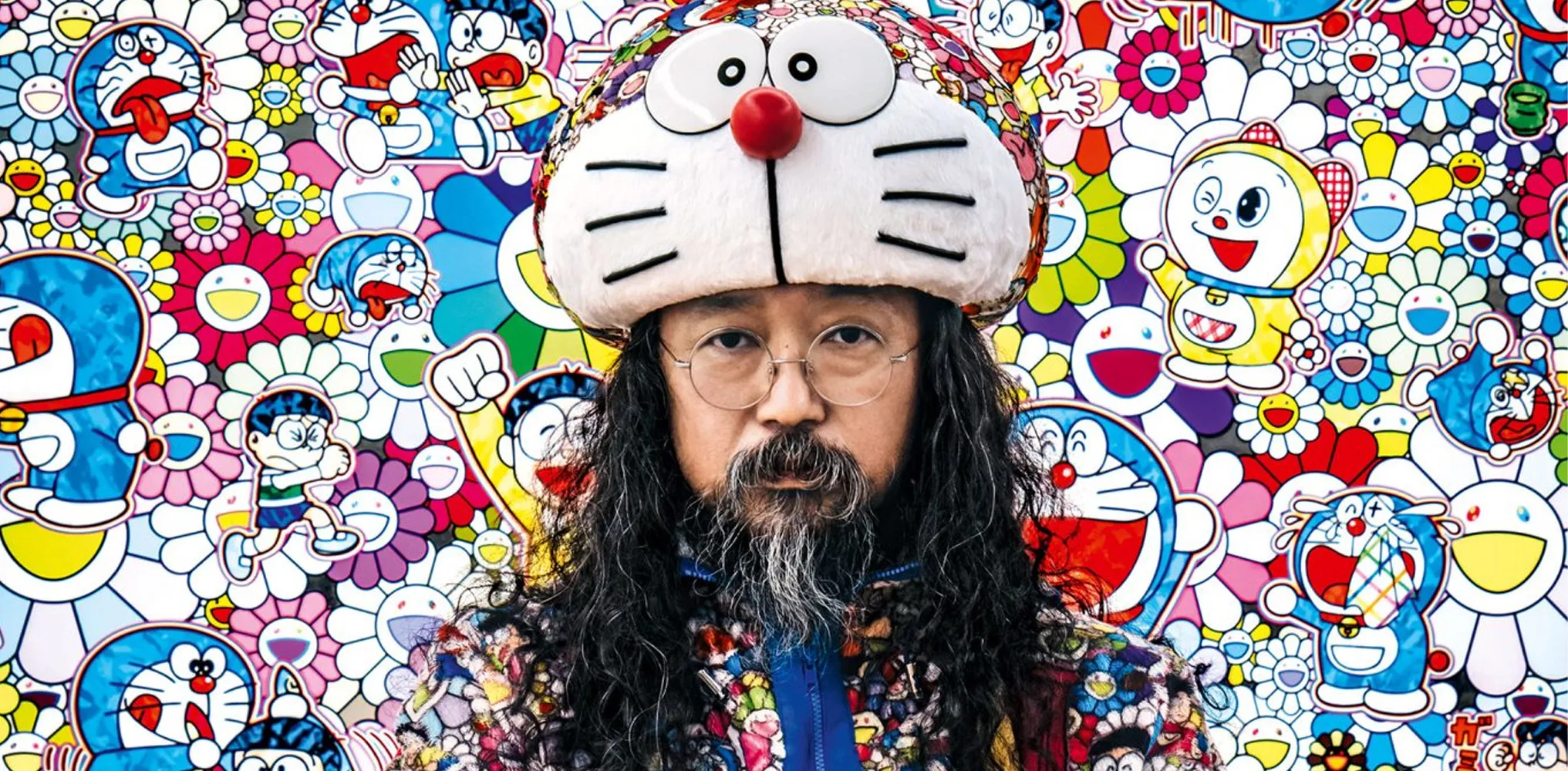CLEVELAND, Ohio — In the halls of the Cleveland Museum of Art, where classical blends with contemporary, Japanese artist Takashi Murakami unfolded his colorful yet deeply disturbing narrative. His new exhibition, "Treading on the Rainbow's Tail," opened on May 25, 2025, and gathered over 100 works — from cartoonish flowers with blood on their petals to anatomical sculptures exposing bones and hearts. An updated version of the exhibition that debuted in Los Angeles, this show is not just a celebration of pop culture but a reflection on the traumas shaping societies and the art that mirrors them. Murakami, whose smiling flowers adorn Louis Vuitton bags and Major League Baseball merchandise, invites visitors to look behind the vibrant surface — into the darkness of Japan's collective memory.
Art on the Edge of Joy and Pain
Takashi Murakami, often dubbed "the Japanese Andy Warhol," has long captivated the world with his "superflat" aesthetic — glossy, cartoonish, but multilayered. In Cleveland, he goes beyond commercial gloss, offering works that balance childhood naivety and historical grief. "People think my art is light, popular," Murakami said in an interview with the Associated Press. "But that's my trap. I hide depth behind colors." This depth, according to curator Ed Shad of The Broad Museum in Los Angeles, lies in exploring traumas — from personal to national.
The exhibition, running until September 7, guides visitors through three key traumas of Japan: the atomic bombings of Hiroshima and Nagasaki in 1945, the Tohoku earthquake and tsunami of 2011 that caused the Fukushima disaster, and the COVID-19 pandemic. While there are no direct images of these events, their echoes are felt in every piece. A wall covered with square portraits of crying flowers, bleeding or entering zombie-like trance, creates a rainbow effect that both enchants and terrifies. "These flowers — like us," Shad explains. "They smile, but bear scars."
The sculpture "Pom and I," where Murakami and his dog are depicted half anatomically — with visible organs and bones, half as ordinary figures — is a meditation on duality. "It's me, torn between Japan and the West, between body and soul," said the artist. Insiders familiar with his work note that this piece reflects Murakami's personal experience in America, where he was perceived as an exotic "other," despite his global fame.
Temple and Dragons: The Spiritual Dimension
Before entering the main hall, visitors pass through a reconstruction of Yumedono — the octagonal structure of Horyu-ji Temple in Nara, symbolizing Buddhist enlightenment. Murakami, according to him, drew inspiration from the series “Shogun” (2024), which revitalized for Western audiences the samurai Japan. "I wanted people to feel the sacredness before entering my world," he explained. Inside this structure are four new paintings created between 2023 and 2025: "Blue Dragon of Kyoto," "Kyoto Millionaire Bird," "White Tiger of Kyoto," and "Black Tortoise of Kyoto." These mythic images, rendered in bright tones, reference Eastern cosmology but pulse with modern energy, as if blending ancient temples with neon-lit Tokyo streets.
This spiritual framework contrasts with Murakami’s commercial fame, whose collaborations with Louis Vuitton, Kanye West, and Billie Eilish have earned him millions. But in Cleveland, he departs from the pop star image, reminding that his art is a dialogue with culture, not just merchandise. "He plays with capitalism but never lets it consume him," says a source close to the Los Angeles gallery scene.
Trauma as a Mirror of Society
Ed Shad, whose curatorial notes laid the foundation for understanding the exhibition, emphasizes its universality. "Murakami's portraits are not just about Japan. They are about how any society reacts to pain, how it heals wounds," he says. The atomic bombings left scars on Japanese psyche, Fukushima eroded trust in technology, and the pandemic exposed the fragility of globalization. Murakami's flowers, which laugh and cry, embody this duality: joy of existence alongside memories of loss.
Visitors wandering through the halls feel this tension. "I came for the flowers but stayed for the emotions," says Emily Carter, a local teacher who visited on opening day. On X (formerly Twitter), users share impressions, calling the works "cartoons with soul" or "a rainbow that screams." Some criticize Murakami for commercializing pain, pointing to his collaborations with luxury brands. "Can art be sincere when it's selling bags for $5,000?" asks one commentator.
Cleveland as a Stage
The choice of Cleveland, an industrial city experiencing cultural revival, is no coincidence. The Museum of Art, with its collection from Rembrandt to Warhol, has long aimed to connect the global and the local. "Murakami fits perfectly: he speaks a universal language but makes us look at ourselves," says museum director Elizabeth Bolder. The exhibition, traveling from Los Angeles, has been adapted for Cleveland with additional new works, making it a unique event for the Midwest.
For a city grappling with economic challenges, the exhibition is not only a cultural triumph but also an economic boost. Local officials estimate it could attract up to 50,000 visitors, generating millions for hotels, restaurants, and shops. "This is the moment Cleveland shines," says Mayor Justin Bibb, who personally welcomed Murakami at the opening.
The Future of Murakami’s Art
"Treading on the Rainbow's Tail" is not just a retrospective but also a statement about Murakami’s direction. At 63, he remains an relentless experimenter, combining anime, Buddhism, and capitalism in a way few can replicate. His new works, like the paintings of Kyoto, hint at a return to Japanese roots after decades of Western influence. "I want my art to be a bridge between East and West, between the past and the future," he says.
As visitors wander through halls, passing crying flowers and mythic dragons, they confront a paradox: art that appears light demands profound effort — both from the creator and the audience. In a world where trauma multiplies and rainbows become rare, Murakami offers not answers but a space for reflection. In Cleveland, where his flowers bloom until September, this space becomes a sanctuary — and a challenge for all seeking meaning in chaos.



